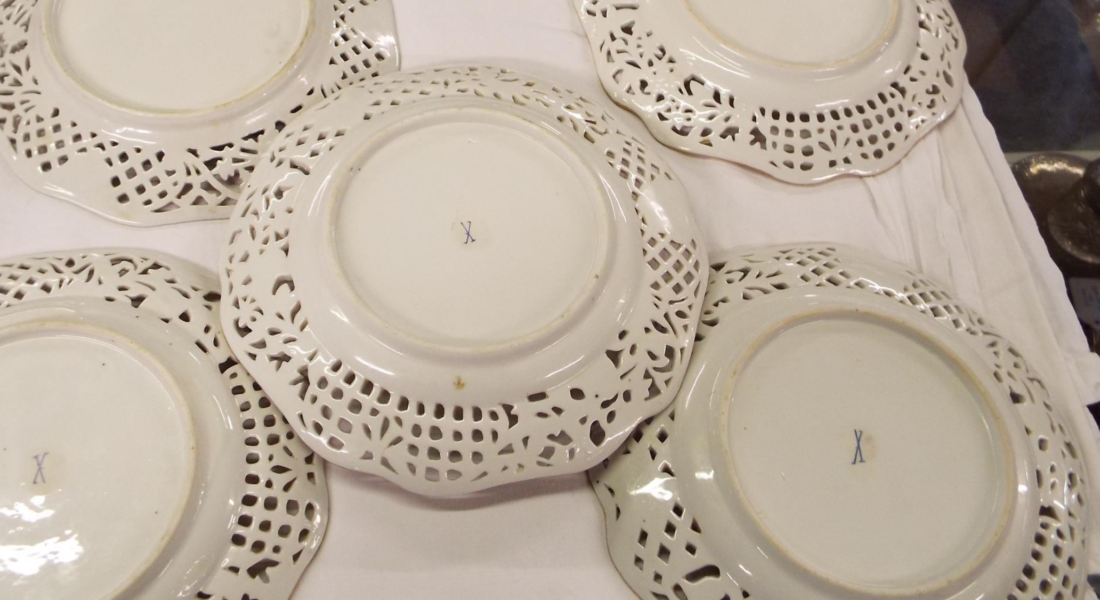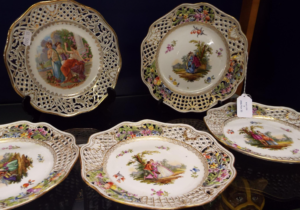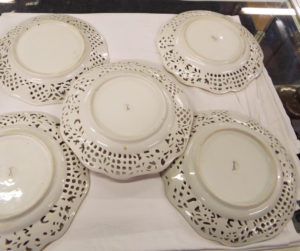
You can be guarrenteed of one thing fakes exist to fool buyers. But where it hits very hard at home is unwary cataloguers who take it upon themselves seeing a blue cross on a piece and assuming it has to be the real thing without checking out the facts first.
Isn’t it or is it doesn’t come into their equation. They assume it is for the buyer to make up his mind. Sadly who mostly likely gets hurt is the unsuspecting thinking they have bought a bargain. Probably never learning the truth let alone recognising what they have is not the “real deal”.
Not a day goes by while searching for authentic Meissen do I come across fakes of all sorts at Auction Salesrooms where an expert should no better and oversee whoever has written out the description. Sadly it would seem this is not the case. Or perhaps the expert does not know any better.
The following is a prime example where a cataloguer sees two lines crossing over to form an X and looking at the style of painting believing the items to be genuine Meissen porcelain
For one thing it is likely the painting is over transfer in the case of these plates being advertised as genuine Meissen. While the style, lattice work and mark could be Meissen if the description of the plates was authentic. Apart from the mark being spurious the painting of the scene poor and the lattice work not the quality of authentic Meissen porcelain.

Catalogued in an auction sale as Meissen porcelain

Catalogued in an auction sale as Meissen porcelain Neither the quality of painting or the mark is authentic. True or False?
Answer False. See above for explanation.

